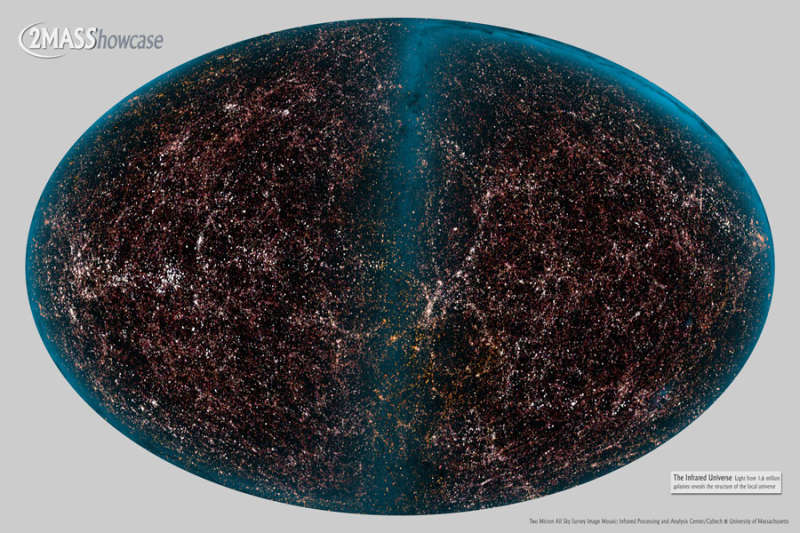
|
Credit & Copyright: 2MASS,
T. H. Jarrett, J. Carpenter, & R. Hurt
Explanation:
Are the nearest galaxies distributed randomly?
A plot of over one million of the brightest "extended sources" detected by the
Two Micron All Sky Survey (2MASS)
shows that they are not.
The vast majority of these
infrared
extended sources are
galaxies.
Visible above is an incredible tapestry of structure that
provides limits
on how the universe formed and evolved.
Many
galaxies are
gravitationally bound together to form
clusters,
which themselves are loosely bound into
superclusters, which in turn are sometimes seen to
align over even larger scale structures.
In contrast, very bright stars inside our own
Milky Way Galaxy
cause the vertical blue sash.
|
January February March April May June July August September October November December |
| ||||||||||||||||||||||||||||||||||||||||||||||||
NASA Web Site Statements, Warnings, and Disclaimers
NASA Official: Jay Norris. Specific rights apply.
A service of: LHEA at NASA / GSFC
& Michigan Tech. U.
Based on Astronomy Picture
Of the Day
Publications with keywords: galaxies
Publications with words: galaxies
See also:
- APOD: 2025 August 28 Á Galaxies, Stars, and Dust
- APOD: 2025 March 2 Á The Hubble Ultra Deep Field in Light and Sound
- APOD: 2024 December 31 Á The Twisted Disk of NGC 4753
- APOD: 2024 December 18 Á NGC 660: Polar Ring Galaxy
- Stellar Streams in the Local Universe
- APOD: 2024 April 15 Á The Cigar Galaxy from Hubble and Webb
- APOD: 2024 March 20 Á The Eyes in Markarians Galaxy Chain
